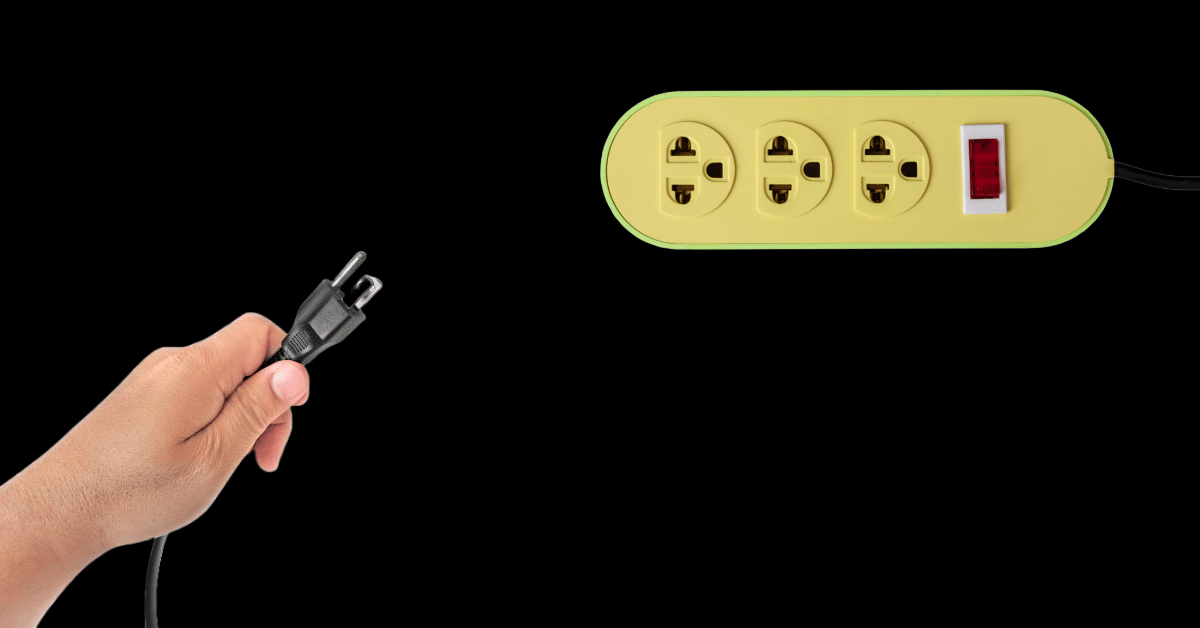
The strongest brands don’t trend. They just are.
It’s easy to go viral then fade into irrelevancy. The true mark of an icon? Being so instantly recognisable that everyone just knows who you are. And how, exactly, does one do that? Well, by showing up consistently for years. Decades, even. Just ask the queen of being iconic, Anna Wintour, who built her brand (and Vogue’s) by staying the same for 37 years.
- Charlotte Ellis, Editor ♡
Want the secret sauce for running ads that actually get you leads?
Join us for a 90-minute workshop that replaces guesswork with a step-by-step setup for profitable campaigns that turn scrolls into sales.
In this session, you’ll learn:
✅ What to post, how often, and in which format (templates included!)
✅ How to set up your first (or next) campaign so it’s built to convert
✅ The one thing every successful campaign gets right
✅ How to track what’s working & tweak what’s not
PLUS The latest best practices for Meta ads in 2025.
Ask questions. Get answers. Leave ready to grow your sales and scale your business.
Wednesday, 30 July | 8:30–10:00am NZT | $59 NZD
WHAT’S HAPPENING IN MARKETING TODAY?
Adidas campaign features real superstars, TikTok may create US-only app & New Superman saves DC

Adidas brings in superstars to remind us their shoes are the original superstars.
Adidas Originals has pulled in icons that only seem fitting for the iconic brand itself for its new "Superstar, the Original" campaign. The campaign features OGs like Samuel L Jackson and Missy Elliot, as well as some more recent like GloRilla and Teezo Touchdown.
The campaign aims to show the influence of the Superstar by connecting these 90s trailblazers with contemporary ones. In the hero spot, Samuel L Jackson explores the nature of timelessness while Teezo plays the piano and Missy breaks the fourth wall on a payphone. It’s black and white. It’s chic. And it’s cool as hell, showcasing the very reason the shell-toe Superstar sneaker has been a cultural marker for many years – the true definition of iconic.
A US-only TikTok could be on the horizon.
This series is like The Walking Dead, except more insufferable and with more seasons. Last month, for the third time since becoming president, Trump signed an executive (albeit questionable) order once again delaying the sell-off date of the platform. Now, TikTok may be working on a US-specific version of the app to avoid the ban altogether. According to The Information, M2 is a spinoff app TikTok is developing that could be available to users on September 5. This is less than two weeks before the potential sale of the platform's US business.
Recently, Trump spoke about a group of “very wealthy people” he had lined up to buy TikTok’s US operations, who would be in talks with Chinese officials. However, a Chinese Foreign Ministry spokesperson declined to confirm any talks. Without the go-ahead, the sale can’t happen. So as usual, no one knows wtf is going on, really. And no one seems to have a clear answer. Coolcoolcoolcool.
The new Superman looks fine af… I mean, like a really good film.
For years, Warner Bros. Discovery has been fighting what seems like a losing battle with Marvel and the unrelenting success they’ve had with the MCU live action comic adaptations. It got so bad, in fact, that the studio pulled the entire enterprise and started over. And it appears that, in true Superman fashion, the new film has really swooped in and saved the day.
Now, hear me out, I’ve always been a DC girl. Batman and the city of Gotham own my spooky little heart. However, my heart seems to have found room for one more. That one being David Corenswet in Lycra. Not only does he nail the freaking role while looking almost too much like he was born for it, the storyline, according to The Verge, is “as big as it is simple,” just as a comic should be. Thank you WBD, thank you James Gunn and Peter Safran, and a particular thank you to David Corenswet’s parents.
-Sophie Randell, Writer
DEEP DIVE
3 Branding lessons from the legacy of Anna Wintour

The sunglasses are coming off (literally, maybe?)
I’m sure I don’t need to tell you, as my well-informed marketers will already know, but after more than three decades at the helm of Vogue, Anna Wintour is stepping down. No, this is not a drill. No, the headlines are not being dramatic.
And yes, we’re all feeling a little... bereft. Whether you worshipped her bobbed aloofness or feared being frostbitten by her gaze (same), one thing’s clear: Anna did not run a magazine. She built an empire.
And not just any empire, of course. The fashion-media-industrial complex as we know it. She fused celebrity, style, status, and storytelling into one immaculately tailored brand. Anna went beyond editor-in-chief. A more suitable title would be editor-in-brand.
So, as we light a Diptyque candle in honour of her reign, let’s break down 3 marketing lessons from the woman who turned aloofness into influence and sunglasses into a business strategy.
1. Curate like your life, and brand, depend on it.
Anna Wintour has worn the same haircut since the late 1980s. Her uniform? Impeccable sheath dress, killer heels, Chanel shades. Expression? Unknowable. Vibe? Precision meets quiet terror.
But make no mistake. This wasn’t a lack of imagination. It was a branding power move. She was the human version of a grid layout. Predictable. Controlled. Iconic.
It's the same reason you never saw Steve Jobs outside of his black turtleneck, blue jeans, and New Balance sneakers. Or H. Clints without her pantsuit. Having an iconic style is said to reduce decision fatigue, but it’s also a bold branding move, particularly in a world that demands daily reinvention.
Consistency is disruptive. Your visual identity, tone, and point of view should feel like an old-money surname: hard to earn, impossible to fake. Choose your aesthetic and stick to it. Think less “what’s trending on TikTok,” more “what would Wintour delete from the feed?”
In brand terms, think about how Glossier's pink bubble wrap bag became a Gen Z status symbol. Or how Supreme’s red logo still commands queues down the block all these years later. That’s the power of repeatable, recognisable brand codes.
2. Sell the lifestyle, not the label.
Under Wintour, Vogue transformed from merely being about clothes.
It was about who you became when you wore the clothes. She understood that fashion is fantasy—aspiration wrapped in chiffon. She cast celebrities on the cover when it was still controversial. She turned the Met Gala into fashion's Super Bowl. She got Beyoncé and Kim K to do couture and politics.
Anna turned a print magazine into a lifestyle portal, a political stage, and a cultural weather vane. Why? Because great branding sells a worldview, not a product.
The most magnetic brands make you feel like joining them says something about you. That’s how Patagonia sells fleece and protest. How Nike sells shoes and rebellion. And how Wintour sold Vogue and an entire mythology of status.
Your product is a gateway drug. The real high is identity.
3. Mystery is the ultimate luxury.
We’re in an era where every intern is a micro-influencer and every brand is oversharing on Threads.
But Anna Wintour said, "No thanks." She kept interviews rare, captions non-existent, and her office basically off-limits unless you were Beyoncé, Lagerfeld, or Michelle Obama.
Her power did not scream. It simply whispered while everyone else screamed about it. It goes to show that in the attention economy, mystery can be currency (if done well.)
You don’t need to post every damn second of your life. Instead, create intrigue and let your audience fill in the gaps. I say this with fair warning, however. This is not easy to pull off and you risk fading into irrelevance if you’re simply refusing to post.
But if you want receipts, brands like Bottega Veneta thrived by ghosting Instagram. Early Glossier played the “we’re not like other beauty brands” card with minimalist packaging and coy messaging. Restraint can be your most seductive move.
The legacy is in the branding.
Anna Wintour wouldn’t be caught dead riding a trend. Instead, she anointed them. She did not chase followers, she curated them. Her legacy is less about fashion and more about formidable brand architecture.
Whether you’re building a fashion label, a fintech app, or a niche newsletter about gardening to death metal – there’s a lesson in Wintour’s reign:
Curate like its couture, sell the dream not the SKU, and for the love of branding, stop oversharing every meal and colonoscopy result.
Long live the queen of cold fronts and cover stories.
-Sophie Randell, Writer
TREND PLUG
The answer to my problems

16 years ago, we got K*nye's infamous Taylor Swift's VMA speech moment, Hannah Montana (the movie), but more importantly, Paper Planes" by M.I.A.
And that's the sound of today's trending audio, with over 45k videos already! Using this audio, creators are getting real about their (ineffective) coping mechanisms, overlaying the text "the answer to all my problems probably isn't going to be [blank], but I'll sure check to be sure"
Things that may or may not be the answer to their problems include:
How you can jump on this trend:
Under the sound, throw up a clip of yourself doing that thing you think will solve all your problems. Add the onscreen text, "the answer to all my problems probably isn't going to be [blank], but I'll sure check to be sure."
A few ideas to get you started:
Posting a quote in a cool font
Changing my LinkedIn headline to “✨Creative✨”
Buying an overpriced water bottle to fix my work ethic
- abdel khalil, brand & marketing executive
FOR THE GROUP CHAT
😲WTF: The future of building
❤How wholesome: That’s a balloon
😊Soooo satisfying: Satisfying Glue Peel
🍝What you should make for dinner tonight: Guacamole Quesadillas
TODAY ON THE YAP PODCAST
Want even more “YAP”ing? Check out the full podcast here.
ASK THE EDITOR

When companies say they want someone who has AI literacy, does this mean being able to write simple code or being able to properly use ChatGPT? -Kai Yin
Hey Kai Yin,
If you're looking at job postings that ask for AI literacy, they are wanting to hire someone who understands how to use AI to do their job more efficiently. As an agency, we have spent a lot of time experimenting with AI, learning how it works, what it's good at, and what it can't do well (yet!).
And because we've put time into figuring this out, we can use it to speed up many of the tasks we do every day. Of course, there are others where it can help with some bits and not others, and other things we still just do ourselves. But the only way to know what it's best used for is to, well, use it. So to answer your question, AI literacy isn't just knowing how to use AI. It's knowing what to use it for.
- Charlotte Ellis, Editor ♡
